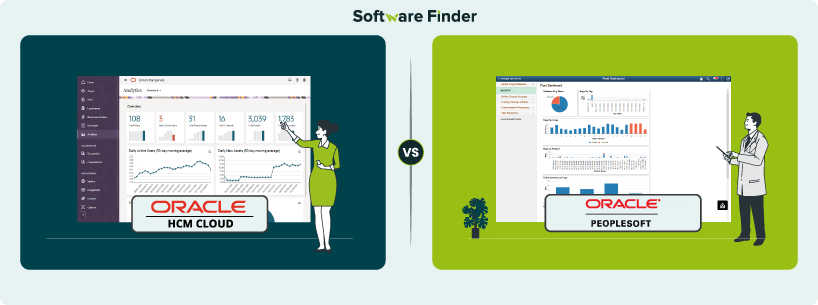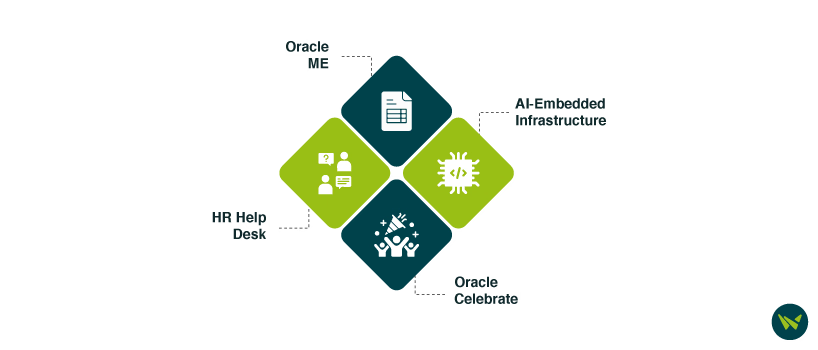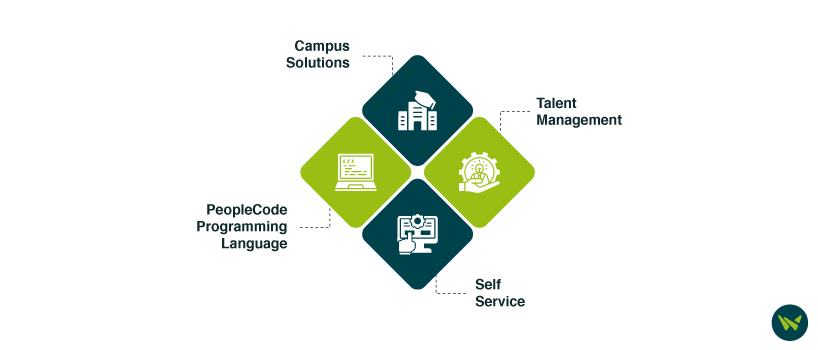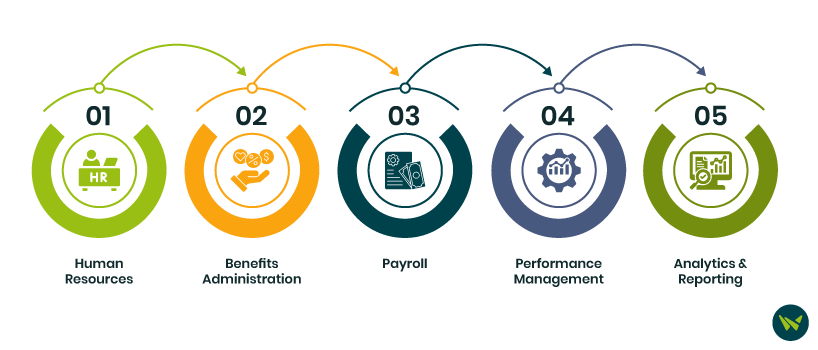
Human capital management (HCM) software supports organizations in managing every stage of the employee lifecycle—from recruitment and onboarding to payroll and workforce planning. These platforms are crucial for streamlining HR operations, ensuring compliance, and enhancing employee engagement. Oracle Fusion Cloud HCM and PeopleSoft HCM both deliver robust human capital management solutions, but they cater to different organizational priorities and needs.
Oracle HCM excels in delivering a unified, AI-powered platform that integrates global HR functions with advanced analytics. In contrast, PeopleSoft stands out for performance management capabilities, making it especially valuable for businesses with unique operational requirements.
This comparison examines how each solution addresses key areas, including HR, payroll, reporting, and performance management, to help you determine which one best suits your organization’s needs.
Feature | Oracle HCM | PeopleSoft |
Human Resources | Offers onboarding, hiring, and compliance across more than 200 countries | Employee records, self-service tools, compliance across multiple languages |
Benefits Administration | Personalized benefits programs, eligibility rules | Manually enroll employees, special taxation, configurable rate types |
Payroll | Multi-country payroll with built-in compliance | PeopleSoft Payroll for North America |
Performance Management | Traditional annual reviews, frequent check-ins | Goal setting, continuous feedback, coaching, and development planning |
Analytics And Reporting | Real-time dashboards and predictive insights | Basic reporting tools |
Pricing | Starts at $4/employee/month | Starts at $85/user/month |
Oracle HCM, also referred to as Oracle Fusion Cloud HCM, is a cloud-based, all-in-one solution designed to streamline and enhance human resources operations across an organization. It brings together a wide range of HR functions on a single platform, improving operational efficiency, ensuring compliance, and elevating the employee experience.
Additionally, the software caters to the needs of various industries and sectors, including financial services, healthcare, hospitality, retail, travel, and manufacturing. This enables these businesses to streamline their HR operations through automation and integrated processes.
Standout Features

- Oracle ME: This ‘My Experience’ feature personalizes communication, workflows, and support, fostering engagement and productivity. Key features include connections, touchpoints, and a digital assistant
- AI-Embedded Infrastructure: Embedded AI capabilities automate routine tasks, offer intelligent recommendations, and enhance decision-making processes
- HR Help Desk: Provides a unified HR service delivery solution with embedded analytics, enabling personalized support and proactive issue resolution without the need for third-party integrations
- Oracle Celebrate: Promotes a culture of recognition by enabling peer-to-peer acknowledgments and celebrating employee achievements, thereby enhancing engagement
Pros And Cons
Pros
- Highly configurable to meet customer requirements
- Includes useful add-ons for organizational support
- Good reporting capabilities for better insights
Cons
- User interface lacks modern design standards
- Controls and workflows are not intuitive
PeopleSoft, developed by Oracle, is an enterprise software platform designed to help large organizations manage essential functions, including human resources and finance. Its features include advanced analytics, detailed reporting, and a full range of HR functionalities. It's particularly well-suited for industries such as education, government, and healthcare, where operations are complex, heavily regulated, and data intensive.
Standout Features

- Campus Solutions: This module supports the management of key student administration tasks, including admissions, enrollment, academic records, and financial aid
- Talent Management: Enables managers to collaborate in setting and tracking performance goals, ensuring they align with the organization's overall objectives. It supports ongoing performance reviews and appraisals, offering a structured platform for continuous feedback
- PeopleCode Programming Language: Utilizes PeopleCode, an object-oriented programming language developed specifically for customizing and extending PeopleSoft applications. It enables the implementation of advanced business logic and processes
- Self-Service: The self-service functionality empowers employees to update personal details, view pay stubs, and request leave. Additionally, it enables managers to efficiently oversee team performance, approve time-off requests, and manage employee records
Pros And Cons
Pros
- Excel integration for easy journal syncing
- Step-by-step guidance for benefit enrollment
- Effective for expense and equity reporting
Cons
- Navigation can be overwhelming with an inconsistent interface
- Lacks built-in email functionality for records


Oracle HCM offers businesses three pricing plans. These are:
- Help Desk: $4/employee/month
- Talent Management: $10/employee/month
- Global HR: $15/employee/month
PeopleSoft offers four pricing plans. Here’s the breakdown of its pricing:
- Benefits: $85/user/month
- Pension Administration: $85/user/month
- Human Resources: $185/user/month
- Payroll: $225/user/month
Disclaimer: The pricing has been sourced from third-party websites and is subject to change.
In conclusion, both Oracle Fusion Cloud HCM and PeopleSoft HCM offer robust human capital management solutions, but they serve distinct operational strategies. Oracle HCM stands out due to its robust analytics and reporting capabilities, as well as its comprehensive payroll and HR features. PeopleSoft, on the other hand, is ideal for organizations that require on-premises control and extensive customization, especially in industries with complex regulatory requirements.
For a comprehensive evaluation of modern HCM platforms, consider comparing Oracle Fusion Cloud HCM with other leading solutions, such as Dayforce or TalentReef, to identify the best fit for your organization’s long-term HR goals.
